What Is Programmatic Advertising? How Does It Work?
Programmatic advertising is the process of automatically buying and selling digital advertising space. Before programmatic advertising was introduced, ordering, setting up, and reporting on ads was a completely manual process.
Any formats and channels can be accessed programmatically, thanks to programmatic platforms that organize and auction publishers’ ad inventory.
For a quick overview of all the necessary jargon, check out our ultimate programmatic advertising glossary for publishers.
For a more detailed guide to the subject, including what programmatic advertising is, how it works, its advantages, the various programmatic platforms used, and how much it costs, you’re already in the right place.
We’ve explored each of these in detail below to provide you a comprehensive guide on the subject.
What Is Programmatic Advertising?
Programmatic advertising is the AI-powered automated sale of ad inventory in real-time. Conducted over the Internet, the practice ensures that ads target the most suitable audiences at any given point in time.
Thanks to its end-to-end automation, the process obviates the need for manual insertion orders. Advertisers can buy ad impressions based on user signals or contextual cues in the blink of an eye. At the same time, publishers can sell their ad space to the highest bidders at any given point in time.
Here are the key elements of programmatic advertising.
Advertisers
Ad buyers looking to contact their target audiences. They use demand-side platforms to buy ad space and to manage their ad campaigns.
Publishers
Owners or managers of websites that sell ad space to advertisers. They make ad impressions available through supply-side platforms.
Ad Exchanges
Digital ad markets that connect advertisers and publishers.
Demand Side Platforms (DSPs)
Software that is used to buy ad space from ad exchanges.
Supply Side Platforms (SSPs)
Software that’s used to make ad space available to ad exchanges.
Data Management Platforms (DMPs)
Software that is used to store, organise and activate user data. Both DSPs and SSPs rely on DMPs in programmatic advertising.
Programmatic advertising’s cost-effective nature indicates that even the smallest publishers and advertisers can use it to achieve their objectives.
Who Uses Programmatic Advertising?
Programmatic advertising is one way for businesses/enterprises to advertise on digital screens. Before programmatic ad buying, digital ads were bought and sold manually, making the process expensive and unreliable.
Programmatic advertising is now reaching new heights, thanks to publishers enabling native ads on their websites. The main reason for publishers embracing programmatic native advertising is that this ad space can be less affected by ad blockers than other ad types and platforms.
Moreover, it affords marketers more time to optimize and improve ads with programmatic techniques to deliver campaign success.
Also Read: DMP vs DSP: What is the Difference?
Why Choose Programmatic Advertising?
Programmatic advertising is set to continue growing. In the US, programmatic advertising is projected to account for 91.1% of digital display ad spend in 2023.
The automated nature of programmatic advertising means publishers have a better chance of selling remnant ad inventory than through manual sales. Moreover, publishers can use different programmatic sales channels, such as programmatic guaranteed, to secure a higher price for premium inventory.
How Does Programmatic Advertising Work?
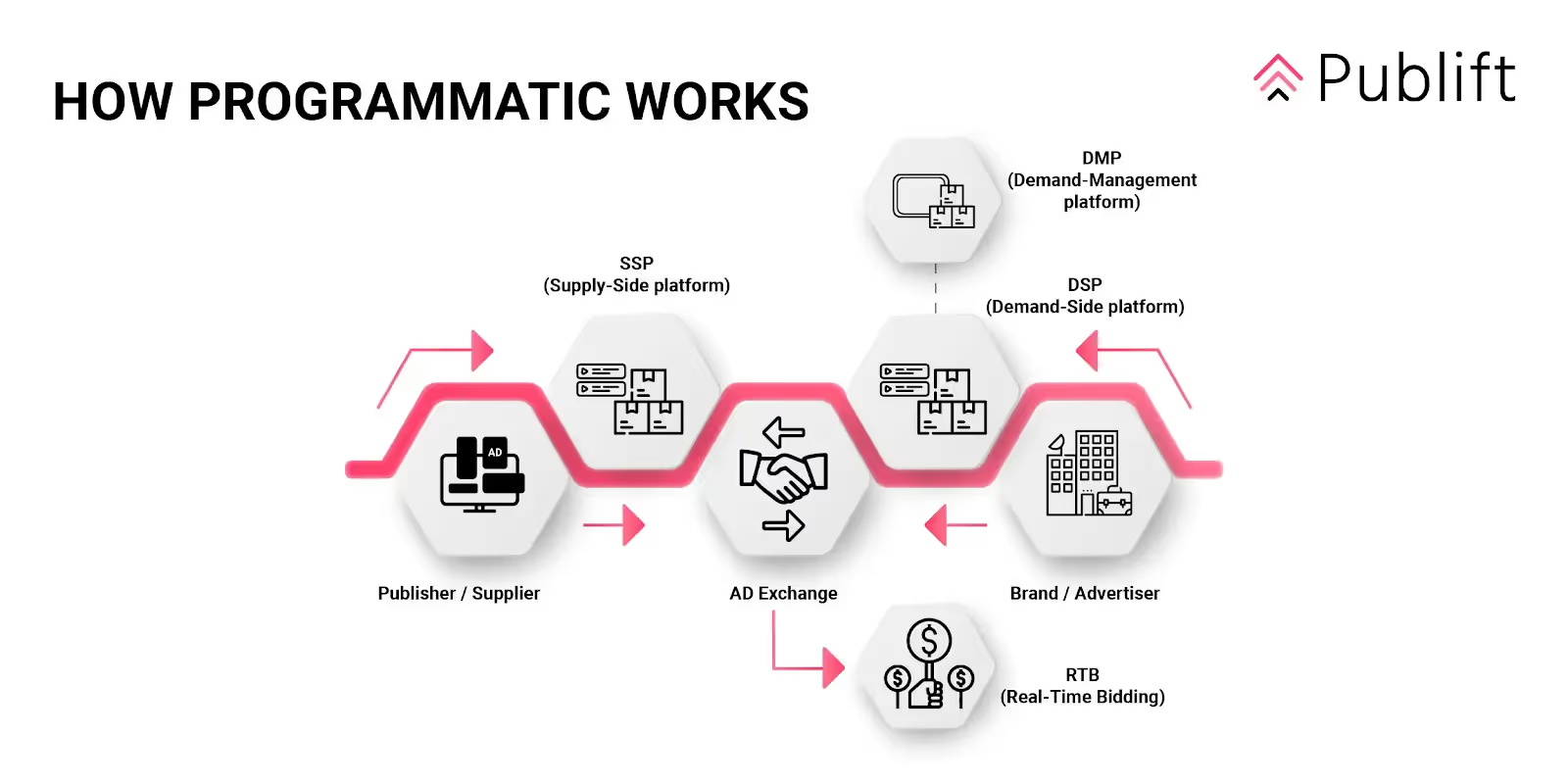
Programmatic advertising works as a coordinated synergy between advertisers, publishers, and ad exchanges, as well as DSPs, SSPs and DMPs - all of them working towards the same goal: the buying and selling of digital ads in real-time, otherwise known as real-time bidding. Here’s a step-by-step snapshot of how the buying and selling of such ads works in practice.
- A person (user) visits a website or opens a mobile app that contains available ad space.
- Detecting the user, the publisher’s website automatically sends a bid request to an SSP. The bid request is a signal that contains data about the user, such as their demographics and browsing history, and the available ad space, such as its size and location on the relevant webpage.
- The SSP sends the bid request to an ad exchange.
- The ad exchange invites advertisers, through their DSPs, to bid on the pertinent ad space.
- DSPs use DMPs to match the user’s data against their advertisers’ targeting parameters.
- Advertisers, through their DSPs, review the bid request and determine whether the user matches their ad campaign criteria. If there’s a match, one of the DSPs places an automated bid on the advertiser’s behalf.
- The ad exchange identifies the winning bid, which is the highest price offered for the ad space. It then notifies the SSP of the winning bid.
- The SSP instructs the publisher’s website to display the winning ad to the user.
It’s worth noting that the entire process takes milliseconds, which allows the ad to appear on the webpage as the page loads on the user’s device. The process is repeated whenever the user visits the pertinent website or mobile app or refreshes the page.
What Are Programmatic Platforms?
Programmatic platforms are software solutions, such as Publift’s Fuse platform, that help with programmatic advertising. There are various platforms available for publishers to find the right services and get access to the right advertisers that match their needs.
The best programmatic advertising platforms form a part of the complete system required for the programmatic advertising process. Each part of the system works together to serve both publishers and advertisers and ensure they both benefit. Some of the types of platforms are named above, including demand-side platform (DSP) and supply-side platform (SSP), data management platform (DMP), and ad exchange.
Let's take a look at each type of programmatic advertising platform to get a better idea of what each one does, and who it's for.

What Is a Supply-Side Platform (SSP)?
An SSP holds the publisher's inventory. The publisher submits a web page as a source for an ad to the SSP, which will connect to one or multiple ad exchanges, ad networks, and DSPs. The SSP will put a pixel code on the page to track visitor behavior.
The code delivers anonymous data about visitors and the actions that they take. The SSP is programmed to maximize the value that publishers receive from an ad impression (an impression being an instance of the ad being shown to someone).
An SSP allows publishers to filter ads by the advertiser and other criteria, as well as set different rates for ad spaces to define the cost.
What Is a Demand-Side Platform (DSP)?
Advertisers use a DSP for their side of the process, using the platform to make bids on their behalf that are in line with the parameters of the ad campaign.
The pixel that publishers include on their website provides data so that audience segments can be created, sending the information to the DSP. The DSP has advertisers ready to make their bids automatically so that the best ad can be shown to the correct audience.
Advertisers benefit from accurate placement of the ad, while publishers benefit from the highest bidder winning. When the DSP and ad exchange have decided which ad to match to which page, this is communicated to the SSP.
What Is the Difference Between an SSP and a DSP?
Simply put, a DSP and an SSP connect to different parts of the programmatic ecosystem.
Advertisers use DSPs to help organize ad-buying, while publishers use SSPs to connect their inventory to demand partners.
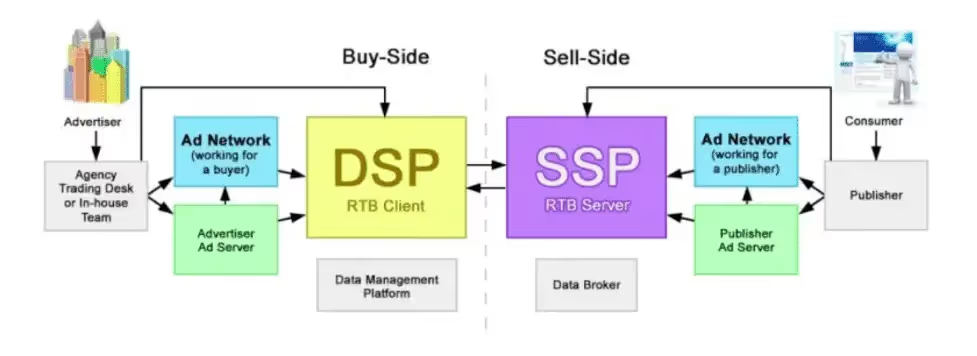
Is Google Ads a DSP?
Google Ads (formerly Google AdWords) is a type of DSP, but is one that’s limited to Google's inventory.
Google Ads allows advertisers to choose between many different campaign types, including display campaigns using the Google Display Network (GDN), which has access to more than 2 million websites, videos and apps.
One of the main benefits of a third-party DSP is you can access inventory that isn't covered by Google's network.
As an advertiser, you want access to as much inventory as possible in order to increase your chances of finding profitable placements.
What Is a Data Management Platform (DMP)?
Having the right data is vital in programmatic marketing. A DMP is an independent platform that collects, manages, analyses, and activates data.
The platform provides comprehensive user profiles to advertisers so that the data can be used in a programmatic algorithm to match the visitors most likely to convert to the best ad.
What Is Google Ad Exchange (AdX)?
Google Ad Exchange connects Google Ads buyers and approved third-party demand partners with publishers using AdSense as well as a number of other approved publishers.
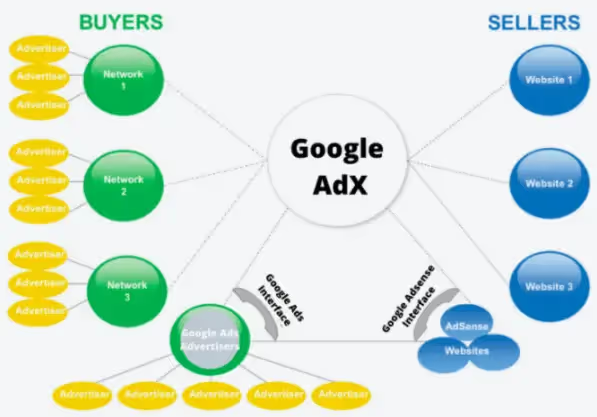
Programmatic Ad Formats
Programmatic advertising spans multiple ad types and channels. Each one of them offers advertisers and publishers unique ways to engage with audiences. Here’s a summary of the key ad types.
Display Ads
The most common type of digital ad, display ads appear on websites, apps and social media, and are often delivered through ad networks, such as the Google Display Network. As their name suggests, they convey mainly visual content, such as graphics, animations and videos, which is one of the key reasons behind their effectiveness. Apart from being used to promote brand visibility and awareness, they’re also often used to retarget users who have already visited a website.
Video Ads
Like their display counterparts, video ads appear on websites, apps and social media, as well as on streaming services and video game consoles. Their ability to combine movement and sound provides viewers with an immersive experience, which explains much of their effectiveness. They’re often used to increase brand awareness, generate leads, build trust and educate consumers.
Connected TV (CTV) Ads
CTV ads are displayed on TV screens either during the broadcast of streaming video content or through apps, and they’re delivered through internet connected devices such as smart TVs and Apple TV. Their effectiveness lies in their advanced targeting parameters, which are based on data about viewers’ viewing habits, interests and demographics. This makes them ideal for the promotion of specific - often, quite niche - products to certain audiences.
Native Ads
Native ads are displayed on publishers’ websites, social media feeds and search engine results pages (SERP). They’re delivered by advertisers who pay for their ads to be displayed alongside the content that’s usually displayed on a given site, feed or SERP. Provided that the content and style of the ads is similar to that of the content of their surroundings, the ads seem more like actual editorial content rather than ads. This gives them a non-ad or ‘native content’ quality, and explains why they can be so effective, especially when they’re used to promote new products or drive traffic to other websites.
Audio Ads
Audio ads are broadcast on digital platforms and traditional radio and are delivered through streaming services and podcasts. Because sound can be quite evocative and emotional, the focus of audio ads on this sense can make them quite effective at arousing people’s imaginations and memory. This makes them ideal for promoting brand awareness among audiences that, when listening to the ads, may actually be engaged in other activities, such as commuting to and from work or performing chores around the home.
Digital Out-of-Home Ads (DOOH)
DOOH ads are displayed in public spaces, such as airports, train and bus stations and shopping malls. They’re delivered either through programmatic advertising or the direct buying of ad space by the advertisers. Much of their effectiveness comes from their location in high foot traffic places, which virtually guarantees a large audience for advertisers. The fact that their content often reflects local factors such as the time of day, weather or events related to their location also explains much of their appeal. Such qualities make them the medium of choice for dynamic storytelling and targeted campaigns in specific locations.
Buying and Selling: Auction Types for Programmatic Advertising
Let's look at the different auction types available for programmatic advertising. Each offers various advantages to publishers.
In addition to auction methods, direct methods of sale and purchase are also available, which can allow for even more control over the process.

The different auction types available for programmatic advertising:
- Header bidding: A technique where publishers simultaneously offer inventory to multiple demand partners. By using header bidding, publishers can increase competition for their ad inventory, driving prices up.
- Exchange bidding: This server-side open auction that is hosted and controlled by Google. Exchange bidding is often regarded as Google's answer to header bidding.
- First price auction: Advertisers bid for an impression with the highest bidder winning and paying the publisher. In a first price auction, the highest bidder determines the price of the impression.
- Second price auction: The runner-up sets the price of an impression in a second price auction. The highest bidder still wins, but only pays a cent more than the runner-up.
- Real-time bidding (RTB)/open auction: The ad exchange connects buyers and sellers in real-time auctions that take just milliseconds to complete.
- Private marketplace: A private marketplace (PMP) works in the same way as real-time bidding, but publishers have more control over who they want to advertise on their website. Publishers decide which advertisers will bid in a small auction before the inventory is released to the open auction.
- Programmatic direct (guaranteed): This involves the direct sale of reserved ad inventory, where the price is set and the volumes are fixed. There is no bidding involved, helping to prevent fraudulent ad spaces.
- Programmatic direct (preferred): While similar to guaranteed deals, preferred deals don’t fix ad unit volumes.
Why Programmatic Advertising Is Important for Advertisers
Before programmatic advertising, it was difficult for advertisers to access ad inventory. This meant that large chunks of ad space went unsold. Automation helped to solve the problem by making it much easier to understand and buy ad inventory.
For advertisers, the benefits of programmatic advertising include:
- Ability to scale: Programmatic advertising allows advertisers to reach a large audience by purchasing ad space from any ad inventory available, rather than being limited as they might have been before.
- Real-time flexibility: Advertisers can make real-time adjustments to ads based on their impressions, and they can take advantage of a broad range of targeting criteria.
- Targeting capabilities: With programmatic targeting, an advertiser's budget can be put to better use and spent more efficiently.
- Efficiency: The process is more streamlined, and more relevant ads are served through targeting. Access to a large pool of publishers means advertisers can get a better return on their investment, while publishers can maximize their revenue too.
Why Programmatic Advertising Is Important for Publishers
With the right tools, programmatic advertising protects publishers and improves the user experience (UX) by displaying ads that are relevant to the audience.
Publishers can also access deals that bring them higher revenues and maximize revenue through different types of bidding, such as header bidding and exchange bidding.
For publishers, the benefits of programmatic advertising include:
- Simplicity: Programmatic advertising makes it so much simpler to sell ad space. Publishers are able to optimize their ad sales with automation tools that reduce the time required to find advertisers.
- Communication: Publishers can communicate and collaborate with advertisers with ease, ensuring both the publisher and the advertiser benefit.
- Relevancy: Visitors to a publisher's site will be served with ads that are relevant to them because they are part of the advertiser’s target audience. Programmatic advertising enables advertisers to access a range of publishers, removing the need for back-and-forth phone calls, emails, or other slow forms of negotiation.
- Efficiency: Programmatic advertising can lower costs and raise margins for publishers, helping them to earn more from their available ad space.
How Programmatic Advertising Supports the Buyer Journey
Regardless of what they’re buying, all consumers pass through the different stages of the funnel-shaped buyer’s journey. Part of the effectiveness of programmatic advertising lies in its capacity to support buyers as they progress through each stage of their journey.
Top of Funnel
At the beginning of their journey, many consumers are unaware of the products that can fulfil their needs. To build customers’ awareness of these products, advertisers can employ various display, video and CTV ads to establish awareness and cultivate recognition of such products.
Middle of Funnel
Once customers have become aware of certain products and can distinguish them among competing products, they tend to show more interest and start to consider the benefits of the products. At this stage, native ads can be particularly effective at promoting products in an unobtrusive way. Not only can programmatic advertising manage the generation of personalised ads but it can also enable the repeated display of ads that adapt to a customer’s behaviour from one website to another - a key tactic in ensuring the continuing relevance of ads to a target audience.
Bottom of Funnel
Once customers have reached the final stage of their journey, they’ve familiarised themselves with the product that interests them and, often, are only a step away from being converted into a paying customer. At this stage, programmatic advertising has a couple of key functions: first, to retarget customers who may have considered a product at length without buying it; and second, to analyse real-time data about a user’s intent and, when appropriate, to encourage the user to buy the product. In both cases, this can take the form, for example, of personalised ads that follow them from site to site.
In short, from the moment they encounter a product through to the moment they’re ready to buy it, programmatic advertising tracks the progress of consumers and adapts ads according to their needs.
Best Programmatic Advertising Examples
1. Hestan Culinary
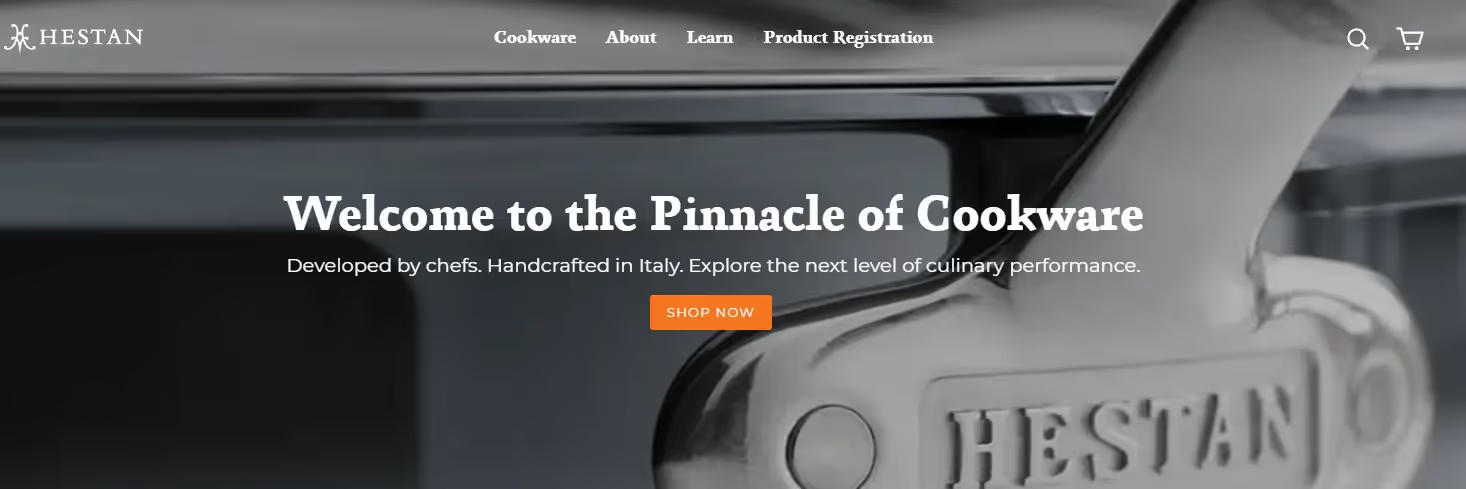
Cookware developer Hestan Culinary experienced a more than 300% increase in bottom of the funnel (BOFU) return on ad spend (ROAS) after it adopted programmatic advertising
The brand saw its retargeting ROAS increase 381% from 1.91 to 9.20 inside the first month, while overall conversions jumped 281%.
2. The Economist
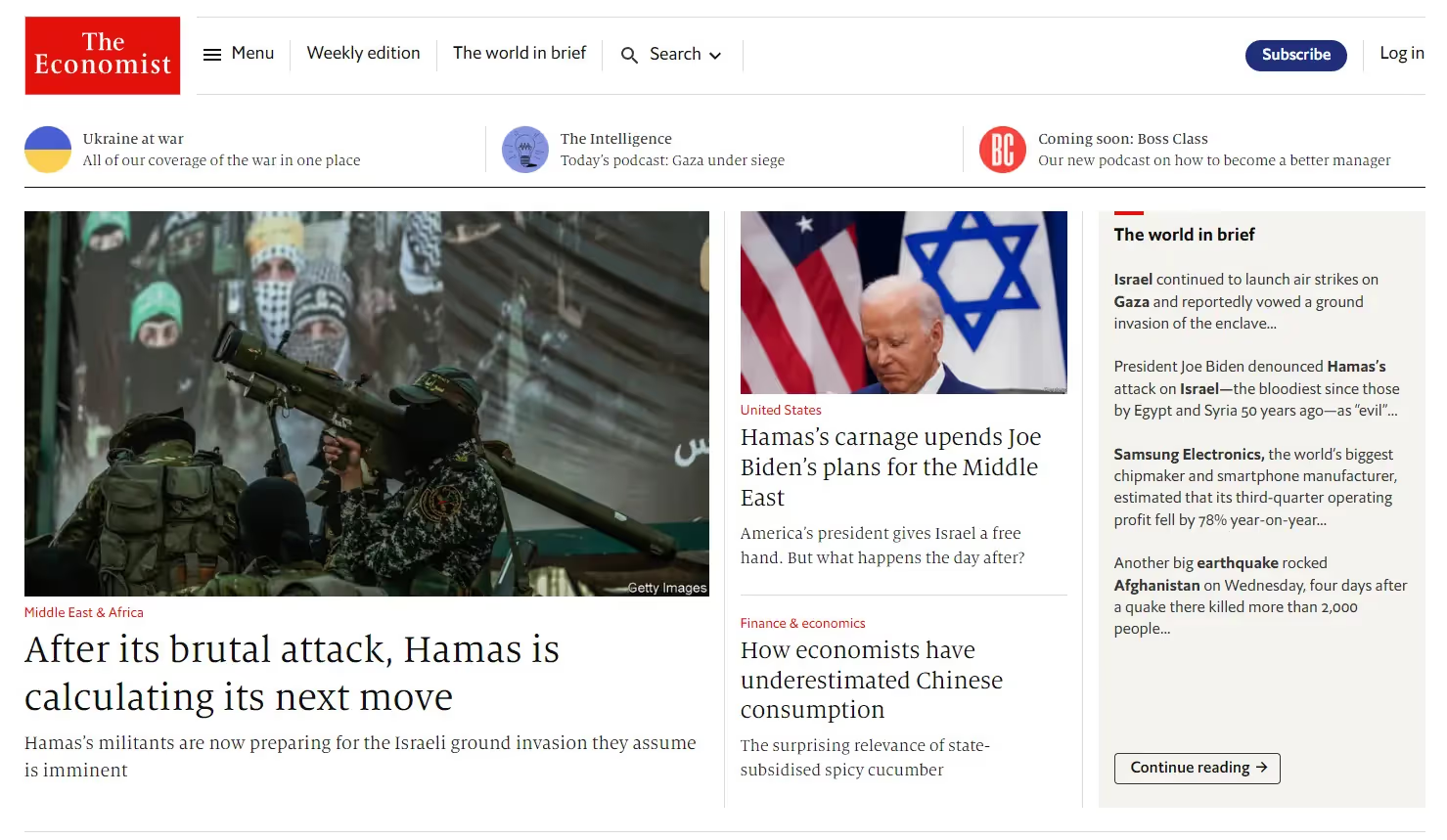
Renowned UK publisher The Economist embraced programmatic advertising to appeal to new audiences and overcome a plateau in subscriptions.
The publisher developed a marketing strategy that revolved around showcasing its content in a new light to several target audience segments. The goal was to pique user interest, provide access to the content of interest and then convert these leads into subscribers.
The Economist hit 50% of its target in the first nine days of its ad campaign, before doubling its target within five weeks. It managed to generate 3,617,000 re-targetable contacts and generated GBP12.7 million ($15.6 million) value in completed subscriptions and supplementary revenue.
3. Healthcare Staffing Agency

A California-based healthcare staffing agency switched from manually advertising job positions on Indeed to a programmatic approach, spreading its investment to include Zip, Appcast Xcelerate, Monster, Nexxt.
While monthly applications increased from 379 to 876, the company’s actual advertising spend fell from $3,000 to $2,807.
How Much Does Programmatic Advertising Cost?
The cost of programmatic advertising can vary, because it is priced using a CPM (cost per mille) model. CPM is a term used in online advertising that means costs per 1,000 ad impressions.
If publishers/advertisers want more specific targeting, the cost increases. The prices vary according to the following factors:
- Type of industry
- Targeted device
- Ad format
- Ad placement on the page
On average, programmatic CPMs tend to be a cheaper option than social media advertising methods and significantly better value than traditional offline approaches.
This means that small businesses with limited marketing budgets can also use programmatic ads as part of their digital marketing strategy.
Digital Advertising vs. Programmatic Advertising
While digital advertising hopes to have a wide reach and find the correct audience, programmatic advertising uses precise targeting to segment audiences with real data.
Programmatic advertising combines the best elements of tech with human knowledge and expertise to make it easier to optimize ads and ad revenue.
Publift's case studies show you some excellent examples of programmatic advertising, plus you can see our broad range of clients too. Take a look at how clients such as Envato and OzBargain have benefited from using programmatic advertising, which has given them control over what appears on their site and optimize their revenue.
Programmatic Advertising Trends: What's Next for programmatic advertising?
As with anything else, programmatic advertising is evolving and changing. Different trends emerge as the field develops, so it's definitely worth paying attention to what's happening with programmatic.
Technologies such as machine learning (ML) and artificial intelligence (AI) are having an impact on everything, and programmatic marketing is no different. As well as technology, trends in programmatic advertising are influenced by best practices, changing attitudes, and wide industry trends.
Artificial Intelligence (AI)
Artificial intelligence and machine learning can be used to find patterns and predict results in real-time along multiple data points. As AI continues to develop, it will be able to combine the mapping of ad viewing metrics with user data so that ads can be placed more accurately, resulting in lower costs.
Increased Personalization
Programmatic ad tech can now be used to optimize ads and measure in real-time. Combined with the power of AI, which provides the necessary data and insights to deliver more precise messaging to the right users, dynamic creative optimization (DCO) makes it possible for advertisers to offer highly relevant and personalized ads to their targeted groups, which is also beneficial for publishers.
DCO understands who the viewer is and chooses the best creative combination to deliver the right message for each user, ensuring that publishers show their site's users only the most relevant ads.
Preventing Ad Fraud
Digital ad fraud is a problem that the marketing industry continues to battle. Advertisers lost more than $68 billion globally to ad fraud in 2022. There are several solutions being used in programmatic advertising to help prevent fraud, including blockchain and the ads.txt initiative.
Publift also helps publishers remove dodgy ads with AdWizard, an industry-leading ad ops extension that gives publishers the ability to manage the ads that appear on their site and protect their brand.
How Does Publift Help Publishers?
When you understand how programmatic advertising works and what it can do for you, you can start improving your revenue by gaining control over what happens to your ad inventory.
Publift, a programmatic advertising technology company, makes programmatic ads easy for publishers with the Fuse platform and related tools. Whether you have a single site or a major publishing network, we can help lift your revenue using programmatic advertising. With an average 55% growth in net revenue in six months of using Fuse, we help our clients get results.
Publift's case studies show you some excellent examples of programmatic advertising, plus you can see just how easy it can be to take advantage of programmatic advertising. Publishers get the benefit of established partnerships and networks to maximize results, with the flexibility to maximize their return on content.
If you're making more than $2,000 in monthly ad revenue, contact us today to learn more about how Publift can help increase your ad revenue and best optimize the ad space available on your website or app.
FAQs
What is programmatic advertising in simple terms?
Programmatic advertising is the automated buying and selling of online ad space in real-time.
What is an example of programmatic advertising?
An example of programmatic advertising would be a streaming service such as Netflix showing personalised ads to viewers based on their viewing habits.
Is Google Ads programmatic ads?
Although they’re both part of the online ad landscape, Google Ads and programmatic advertising are different. Google Ads is an ad platform that allows businesses to create ads and then display them on Google websites. Programmatic advertising is the real-time buying and selling of ad space that enables Google Ads and other ad platforms to operate.
Is Facebook ads programmatic?
Although they’re both part of the online ad landscape, Facebook Ads and programmatic advertising are different. Facebook Ads is an ad platform that allows businesses to create ads and then display them on Facebook and Facebook-owned websites. Programmatic advertising is the real-time buying and selling of ad space that enables Facebook Ads and other ad platforms to operate.
What is the difference between programmatic advertising and display ads?
The difference between programmatic advertising and display ads is that the former is the real-time, automated buying and selling of online ad space, whereas the latter is one of the ad formats that are used in programmatic advertising.
How do you measure the efficiency of a programmatic advertising campaign?
You can measure the efficiency of a programmatic advertising campaign by using various metrics, such as cost-per-thousand impressions (CPMs), click-through rates (CTRs), viewability and conversions.









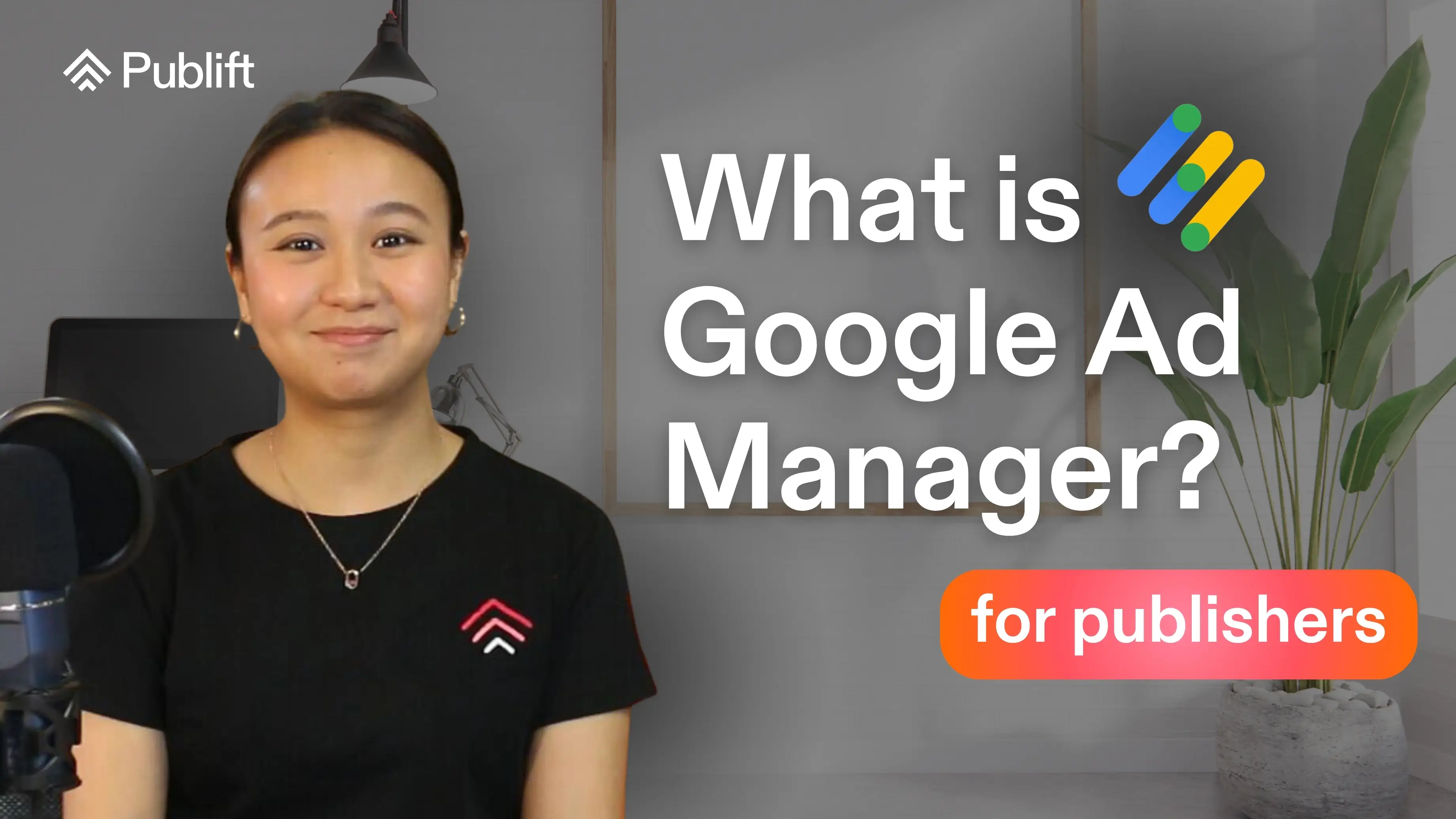


.svg)
.avif)